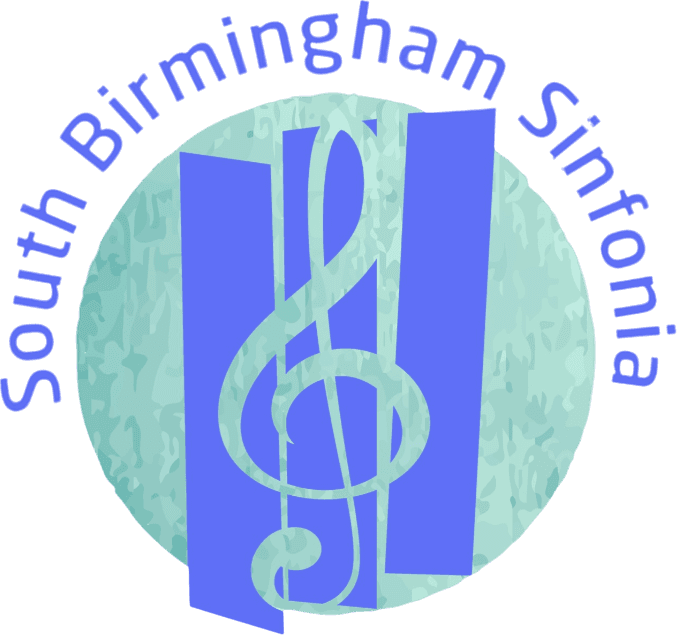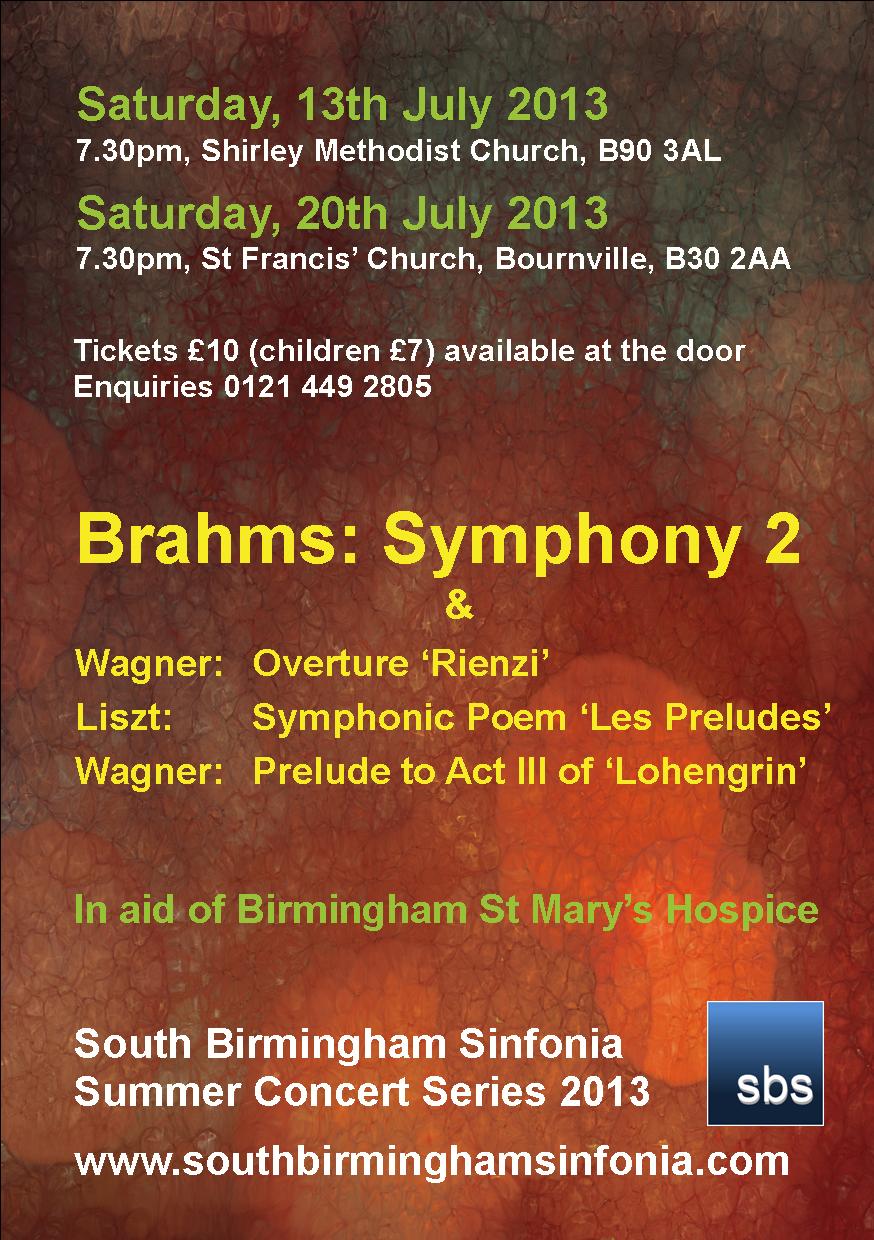Saturday 13th July 2013 at 7.30 pm in Shirley Methodist Church, and Saturday 20th July 2013 at 7.30 pm in St Francis’ Church, Bournville.
Conductor: Lee Differ
Wagner’s Overture to Rienzi
This is an exciting an challenging work. Rienzi is an early opera by Wagner (his third) and very much influenced by and in the style of Meyerbeer. Tuneful and light, and with brilliant brass playing, it is a long way from the sound of the “Ring”. It will be fascinating to hear some of the more unexpected origins of Wagner’s later more mature style.
As an aside, but hopefully of interest, and just to show how far from the kind of Wagner offering we are used to is Rienzi is, your web editor was reading “Confessions of a young man” by George Moore (published 1888) in which he compares some of Mallarmé’s poetry, especially the early piece that was to be later made famous by Debussy called “L’Après Midi d’un Faun.” Moore thinks it is apt to point out that “L’Après Midi” could not be more different to Mallarmé’s later style, saying “It bears the same relation to the author’s later work as Rienzi to The Walkyrie.” Clearly both operas were well-known at the time, and Rienzi was popular but Die Walküre particularly notorious. SBS will be playing the lesser-known popular work in this concert.
Liszt’s Symphonic Poem ‘Les Préludes’
‘Les Préludes’ is the third of Liszt’s thirteen symphonic poems, first performed in 1854, and is described as a “symphonische Dichtung” (symphonic poem). Indeed the term “symphonic poem” may have been specially invented for this work. The work refers to an Ode of Alphonse de Lamartine’s Nouvelles méditations poétiques, and is prefaced by Liszt himself,
What else is our life but a series of preludes to that unknown Hymn…?
Liszt was a major influence on Wagner’s mature style, as well as many other composers, and is rightly performed alongside Wagner. The discerning listener will hear many a “Wagnerian” moment alongside the lighter passages in this symphonic poem, as well as a passage bearing uncanny resemblance to the famous opening of Strauss’ “Also sprach Zarathustra” (1896). But this is all really the wrong way round… What we normally think of as “Wagnerian moments” should surely be more properly be called “Lisztian”. The juxtaposition of Liszt and Wagner in this programme makes for fascinating listening.
In case it comes up in a pub quiz or something, the trivia collector should know that Les Préludes was used by Universal as music for Flash Gordon in the 1930s.
Wagner’s Prelude to Act III of ‘Lohengrin’
This short prelude features the main theme of Lohengrin, surely one of the best known and most unforgettable Wagner themes in the repertoire, and a rousing way to end the first half of this summer concert.
Brahms’ Second Symphony
Brahms’ music of course sits diametrically opposite Wagner’s. Both can be described as Germanic, and in their own separate ways strongly nationalistic, though Brahms’ nationalism pertains just to music. but Brahms’ music is firmly based on classical traditions. The influence of Beethoven and Bach are evident throughout Brahms’ symphonic works, and certainly in this symphony.
The second symphony, in D major, is pastoral in style. Prior to the first performance Brahms mischievously described it as “melancholy” and said there would not be a dry eye in the house, knowing of course that the opposite would be the case. Many many years later this cheery symphony is still enjoyed by all.

